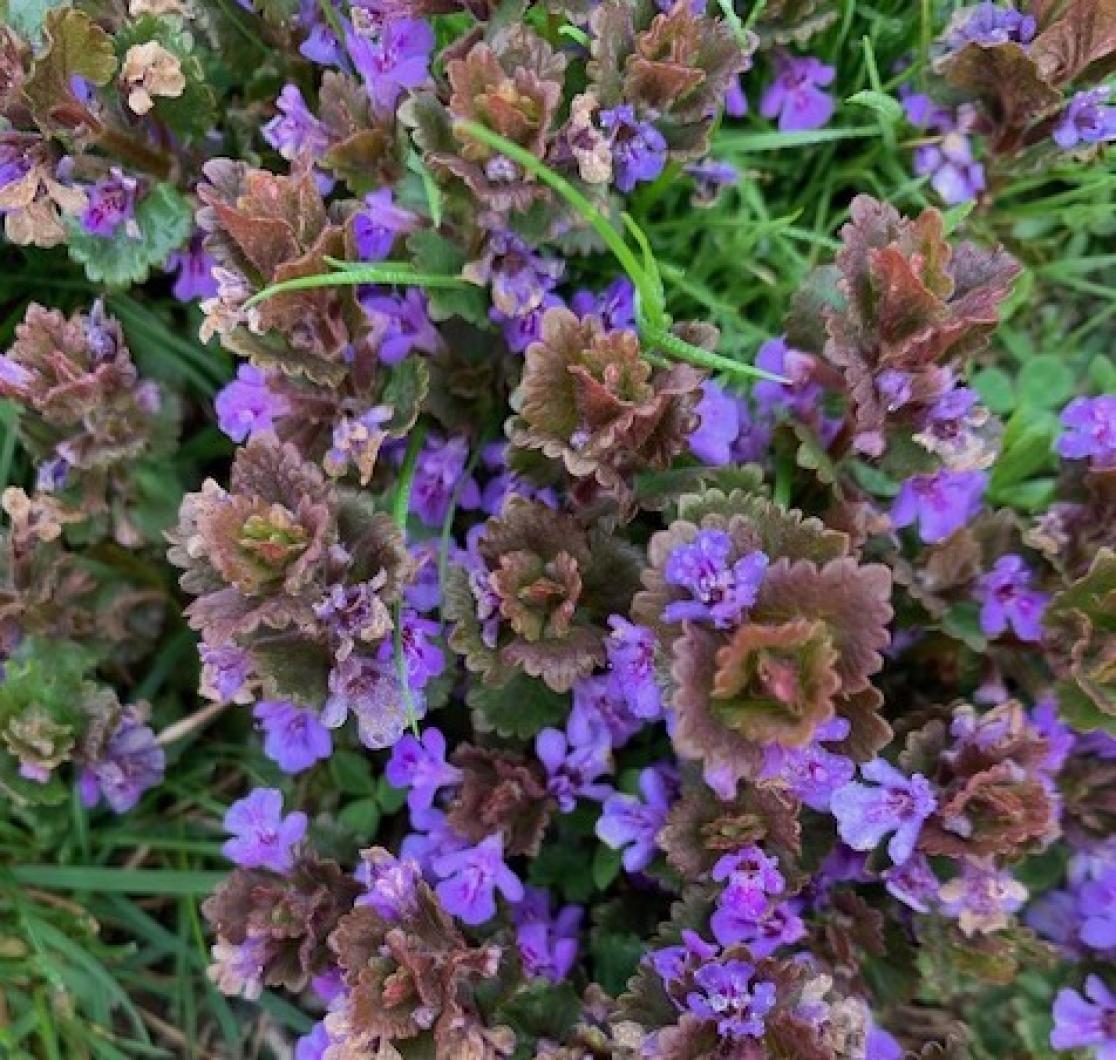Early 20th Century Anglo-Argentinian author, naturalist and ornithologist William Henry Hudson was a grass grouch. He explained, “I am not a lover of lawns. Rather would I see daisies in their thousands, ground ivy, hawkweed, and even the hated plantain with tall stems, and dandelions with splendid flowers and fairy down, than the too — well-tended lawn.”
I couldn’t agree more, even if some of the species he prefers are not native and can overtake your turf. One of his choices, ground ivy, is considered invasive in many places and resists eradication due to its reproductive prowess.
Propagation is virtually assured when ground ivy seeds, roots, and spreading stems all allow for its expansion. Besides being able to easily thrive and spread, ground ivy resists eradication because of those multiple mechanisms. No wonder it also goes by the names creeping Jenny, creeping Charlie, and runaway Robin.
Ground ivy, Glechoma hederacea, is notorious and notable for its flavors and function. Reported in North America as early as the late 1600s, this plant was brought by settlers who valued its familiar characteristics and qualities that provided food, medicine, and spirits.
You could toast its tenacity and its taste. A member of the mint family, ground ivy’s leaves are edible raw in salads, cooked as pot greens for soups and stews, and added to staples such as rice and grains. With leaves high in vitamin C and an ability to remain green through much of the year, ground ivy is a healthy and reliable source of nutrition. Dry those leaves for a tasty tea or use the plant in cheese making, as it has enzymes that can substitute for animal rennet.
And I will drink to its spirit. Ground ivy was used by the Saxons for brewing ale and functioned for flavor, clarification, and as a preservative. It didn’t escape the notice of Britons who employed it before hops came into widespread use.
One only needs to look at its other names to see its connection to consumption. Alehoof, tunhoof, and gill-over-the-ground all allude to alcohol. A tun is a measure of liquid volume, a specific-sized vat or barrel. Gill, in gill-over-the-ground, describes a vessel that contains a unit of mass equal to about a quarter pint used to measure alcohol (think shot glass or jigger).
As medicine, ground ivy is recommended for almost all that ails you. Eye inflammation, tinnitus, kidney disease, indigestion, and bronchitis are a few of the conditions for which this plant is recommended. It was also employed as an abortifacient, insect killer, and for disinfection using its volatile oils.
Finding and identifying this plant isn’t hard. Look in lawns, fields, and on the ground in wooded areas to start. Having opposite reniform, or kidney-shaped leaves, and square stems, this small and creeping plant forms dense mats and has a musky mint odor. It resembles a few other species including purple dead nettle, henbit, common mallow, and garlic mustard, if any of those are familiar. Purple or blue tubular flowers are blooming now and make for a spectacular spreading violet carpet on the ground.
On the bright side, the flowers of these weeds work wonders for wild bees that seek its nectar in the spring. Some flies and wasps also use ground ivy as a host for their gall-making to house those insects’ young.
It clearly takes a lot of talent and versatility to succeed in this ivy’s league.
Suzan Bellincampi is director of the Felix Neck Wildlife Sanctuary in Edgartown, and author of Martha’s Vineyard: A Field Guide to Island Nature and The Nature of Martha’s Vineyard.




Comments
Comment policy »